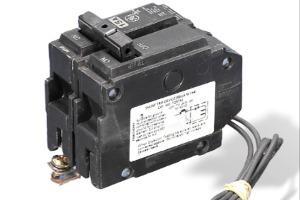
While circuit breakers protect appliances from power surges, shunt trip breakers add more protection to our electrical system and equipment.
If you are looking to add additional protection to your home circuit, or even trip your breaker remotely from your comfort zone, why not shop for a shunt trip circuit breaker?
What is a shunt trip breaker?
A shunt trip device is an optional accessory for breakers that allows you to trip a circuit breaker with a remote, or automatically trip the switch during electrical surge or short circuit.
Shunt trip breakers are mostly used in commercial and industrial applications to enhance safety and protection of electrical appliances.
Types of shunt trip breakers
There are two main types of shunt trip circuit breakers they include.
- Automatic shunt trip breakers: These breakers trip automatically when they detect an electrical fault such as an overcurrent or a fire alarm.
- Manual shunt trip breakers: These breakers are tripped manually by pressing the remote button.
How the shunt trip circuit breakers work
A shunt trip breaker works like other circuit breakers. However, it comes with a solenoid coil which is connected to a separate control circuit.
When the control circuit is energized due to electrical fault or overload, it creates a magnetic field around the solenoid coil, which pulls a plunger inward.
This plunger is connected to the tripping mechanism of the circuit breaker. So when it is pulled inward, it trips the breaker and cuts off the power source.
Alternatively, a shunt trip breaker can also work with a remote control so you can trip the breaker remotely when there are electrical hazards
Where are shunt trips required
Shunt trip circuit breakers are used in various applications such as
- Industrial machines to protect it from damages that may arise from electrical faults.
- Fire protection systems to automatically shut off electrical power in the event of a fire outbreak.
- in commercial buildings for additional protection against electrical damage.
- hospitals and healthcare facilities to protect hospital equipment from electrical damage.
Advantages of using a shunt trip breaker
There are several advantages to using a shunt trip devices, these include:
- Enhanced Safety: It provides an additional layer of safety by quickly tripping the main breaker in the event of a fault or overload, preventing potential damage to electrical equipment.
- Remote tripping capability: A shunt trip breaker usually comes with a remote control to enable you to turn off the breaker at any needed time.
- Protection of sensitive equipment: It can help protect sensitive electrical equipment from power surges caused by overload or faults, ensuring the durability of the equipment.
Shunt trip breaker wiring

Before you wire a shunt trip, there are some things you will need to know.
Shunt trip is an accessory and is not compatible with all breakers. Some breakers come with an in-built shunt trip, others require specific models, or to be installed in the factory. Therefore, it is necessary that you evaluate all these before the wiring.
If the breaker is compatible with the shunt trip device, you can then follow this wiring diagram to install it.
Based on the MCCB shunt trip breaker wiring diagram above, the 3-phase 4-wire system from supply is connected to the mccb breaker.
The neutral wire is connected to the shunt coil, and the control line wires to the EPO button.
Difference between a shunt breaker and a GFCI
A shunt trip and a ground fault circuit interrupters (GFCI) are both electrical devices, however, they are designed to work in different ways and for different purposes.
Below are their major differences.
| Features | Shunt trip | GFCI |
|---|---|---|
| Purpose | Protect industrial machines from damage | Protects humans from the risk of electrocution |
| Operations | Can trip automatically or with a remote switch | Trips immediately, it detects ground fault |
| Applications | Industries, commercial buildings, elevator machines and other places | Bathrooms, kitchens and other wet environments. |
When to call an electrician
If you have any issues with your electrical system, or went us to help you with a quotation or any wiring advice, contact us as we are here for you.